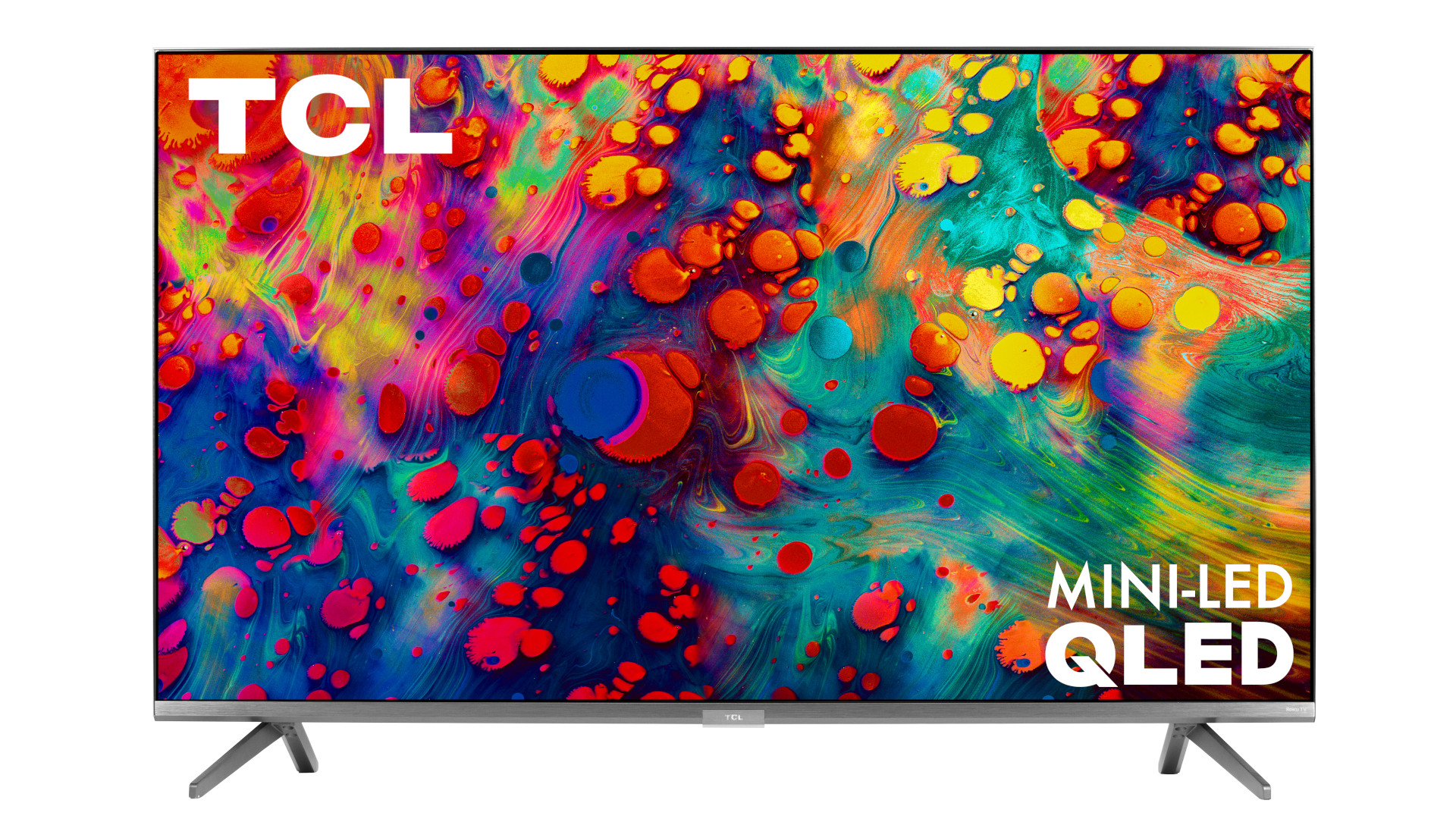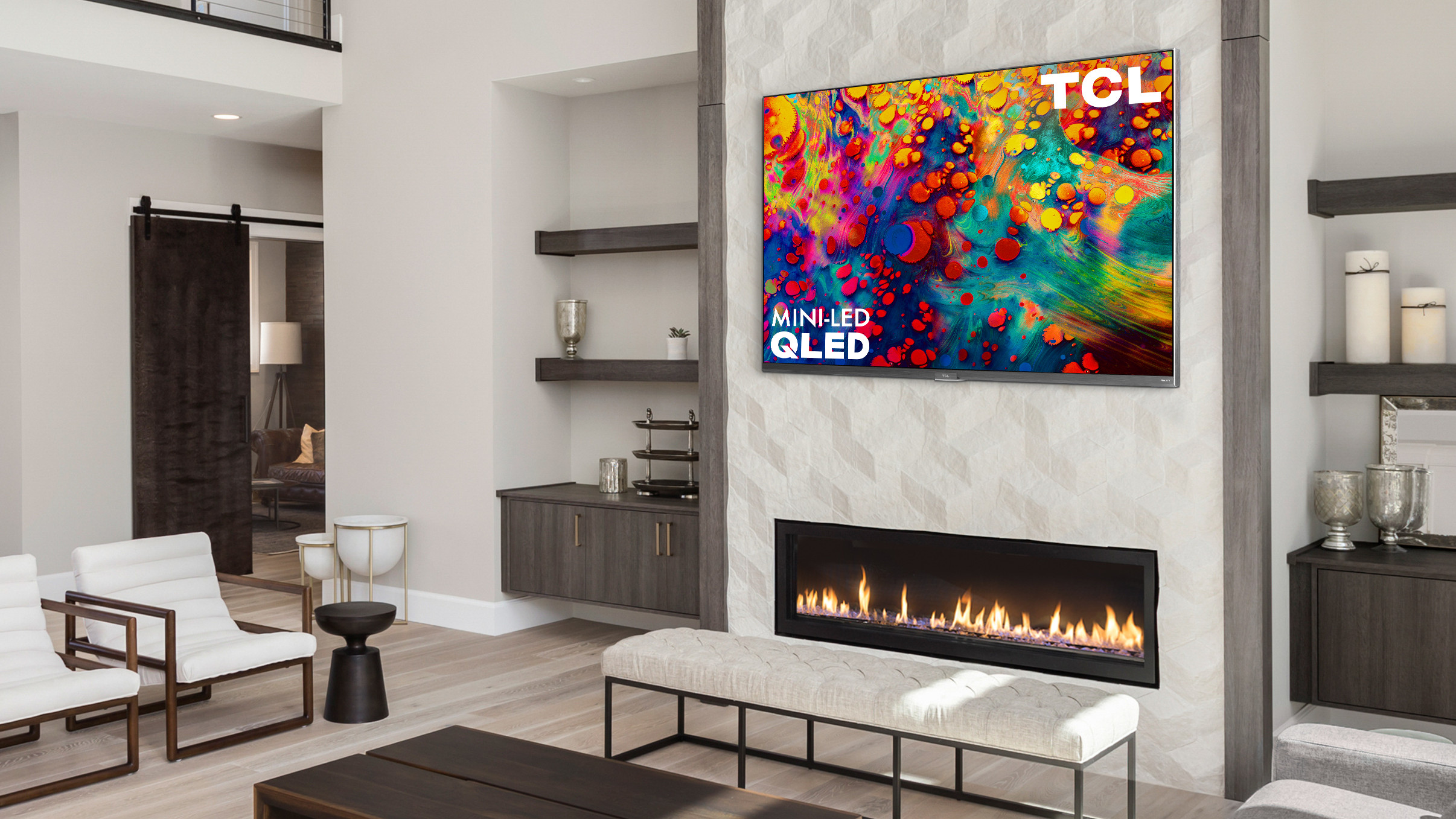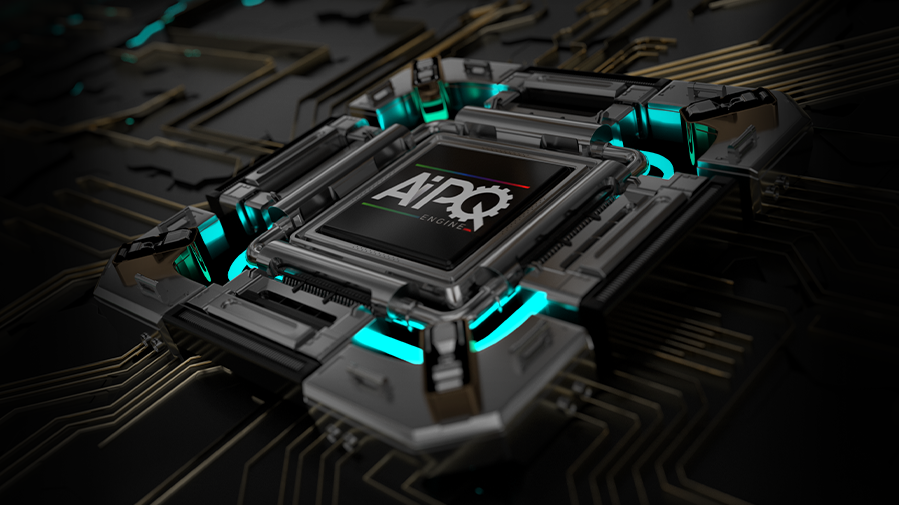One-minute review
Although it's been superseded by a brand-new 8K TV model, the TCL 6-Series 8K TV (R648), the TCL 6-Series 2020 QLED (R635) is still an incredible value.
Starting at just $650, the TCL 6-Series R635 is a 4K Roku TV that uses Mini LED – a technology that often goes into TVs that cost three times as much – as well as a Quantum Dot filter for more vibrant colors.
The result? The 6-Series is brighter than before, more colorful and doesn’t have a single hint of haloing or light bleed. It’s designed in a new way to hide your cables and it’s the first TV to come with THX Certified Game Mode for 1440p/120Hz gaming.
Yes, the 8K TV still has a higher brightness and four times the amount of pixels, but if you're buying a TV to binge Netflix or stream Hulu without breaking the bank, this is the 4K TV that we'd recommend for you.
- Check out the best TCL TVs overall
TCL 6-Series 2020 price and release date
The TCL 6-Series R635 became available starting in August 2020. Here in the US, it’s available in three different sizes including a 55-, 65- and 75-inch model that cost $649, $899 and $1,399, respectively.
What makes the 6-Series so unique is that, despite its affordable price tag, it sports features that you’d find on TVs that cost twice as much, making it an incredible value.
In terms of performance, this year's TCL 6-Series is pretty similar to the full-array Samsung Q80T QLED TV and LG Nano 90, both of which use variations of quantum dot for greater color accuracy, but the 6-Series R635 is $300 to $650 cheaper than either option and uses the easily navigable Roku TV.

Design
The TCL 6-Series has a lot going for it in terms of design (see: that Mini-LED backlight), but it’s not exactly an art piece the way Samsung’s The Frame is, either. That may feel like a potshot, but the 6-Series R635 is fairly chunky for an LED-LCD screen, and can’t touch the ultra-slim profile of an OLED.
Despite not being incredibly slim, the nearly bezel-less design of the TV is fairly versatile. The legs of the TV can either be placed close together to fit on a smaller table or stand, or can be attached to the outside corners of the TV to give it some more stability.
Speaking of the legs, one neat addition this year is the ability to weave cables through the legs themselves, creating a less chaotic space free from wires.
Spin it around and you’ll find a solid selection of ports. Among them you’ve got ethernet, four HDMI 2.0b ports, one with eARC support, plus an AV In port that takes your standard composite (Red-White-Yellow RCA) input, USB and optical audio.
Note, of course, that these aren't HDMI 2.1 ports that can carry 4K/120Hz or 8K signals – but 4K/60 or 1440p/120 is still very much possible here.
The remote that ships with the TV is similar to the Roku remotes that have shipped with past models, but it gets the job done. The only real change this time around is that there’s now a button for Disney Plus, which is probably better for most folks than ESPN+ that was there before.

Smart TV (Roku TV)
Like previous years, the TCL 6-Series R635 uses Roku TV, an egalitarian smart TV platform that has a fair and robust search feature and most of the major streaming apps.
The search bit is important, especially if you’ve ever used an Apple TV or Amazon Fire TV, both of which would much rather have you stream from their ancillary streaming services over any of the third-party ones. Because Roku doesn’t have ties to a major streaming service – other than a vague deal to include FandangoNow on the home screen of the OS – it doesn’t push you any direction you don’t want to go.
Happily Roku TV supports everything from Netflix, Hulu, Sling TV and Amazon, to lesser-known channels like Pluto.tv, tubi, Crackle and others. The only major app missing from the bunch is HBO Max, but that will likely be resolved as soon as the two companies reach an agreement in the next few months.
If you’re a cord cutter, you’ll love the Featured Free section of the homepage that shows you what's available for free on the different services and Roku’s own streaming service, The Roku Channel, which provides its own collection of entirely free movies that change in and out every few months. These are invaluable resources for cord-cutters who want live cable-free, and a great alternative to channel surfing for folks who still have a box.
One nice surprise TCL and Roku tucked into the TV is that it’s Screencast-ready – a handy feature that allows you to cast content from your mobile device to your TV. This is nice if you have a group of friends over and they all want a turn showing their favorite YouTube clip, or if you want to use your TV as a digital picture frame when family comes to visit.
In terms of smart assistants, Roku TV uses the Roku Assistant, which is really only good for finding shows and movies, but it does link up to Amazon Alexa and Google Assistant if you want to control the TV using either one of those smart home platforms.

Performance
The area that you’ll see the biggest improvement in the TCL 6-Series this year is with its performance – most notably in the black levels, contrast and lack of haloing you might have seen on previous models.
That's all thanks to the new Mini LED backlight system that uses thousands of LEDs instead of hundreds to get near-perfect black levels next to bright highlights.
The only drawback, here, we've noticed, is that the peak brightness is actually a bit lower compared to other QLED TVs not using Mini LED, like the Samsung Q80T or Samsung Q90T, Vizio P-Series Quantum X or even TCL's own 8-Series that we measured last year at over 1,300 nits of peak brightness.
The result is that the 6-Series is more closer akin to OLED in terms of brightness and contrast, but has the benefit of using quantum dots, like last year, which means you’ll see a Wide Color Gamut that looks amazing.
To put the TCL 6-Series through its paces we tried tons of different content, from Night on Earth (available in Dolby Vision, no less) to the local news to see how the TV upscaled HD content to fill the 4K screen.
Because there’s still a dearth of 4K/HDR content out there the 6-Series still relies really heavily on its AiPQ Engine to transform HD to 4K content. It does this using three algorithms – one for color, one for clarity and one for contrast – and the results, so far, do seem better than last year.
For folks who want to get really serious about fine-tuning the picture of the TV, TCL includes five default picture settings, each of which can be further refined in the areas of color, contrast, etc… For our testing, we’ve so far gravitated to the Normal picture setting with most of the motion processing technology turned off due to the fact that it introduced motion artifacts while watching films like Spider-Man: Into the Spiderverse.

The only other issue with the AiPQ Engine is that, no matter the mode, we’ve noticed that the processor can over-process areas of extreme brightness, making them a flat white color. We noticed this in clouds that lost their texture in shows like Down to Earth on Netflix or bright white buildings. It could be that the Mini LEDs are all turning on in a given area when only a few should, effectively boosting the brightness of the scene but obscuring small details in the image.
For gamers, the 6-Series with Mini LED is a bit of a double-edged sword. On one hand, it supports 120Hz gaming and Variable Refresh Rate. The downside here is that, at 120 fps, the resolution is limited to 1440p and the TV doesn’t support proprietary GPU technologies like Nvidia G-Sync and AMD Freesync.
It’s better to have 1440p/120fps gameplay than 1080p/60, obviously, but it would be nice if TCL used HDMI 2.1 to get the full benefits of the spec.
Sound
The sound on the TCL 6-Series is perfectly acceptable. You won't hear the fine details in classical music or the spacious soundstage of a 5.1 surround system, but you won't have any complaints about the volume level either.
On the frame you've got two 8W speakers that emphasize mids and highs rather than wall-shaking bass. That's a bit less than some other TVs that use 10W or even 20W drivers like the Sony X950H that we reviewed a few months back, but regardless the 6-Series' sound gave us little to complain about.
The best thing you can do with the money you save on the TV is invest in a Dolby Atmos soundbar like the Vizio SB36512-F6, Sony HT-X8500, LG SL9YG or the Samsung HW-Q70R. Because the TCL 6-Series has Atmos passthrough and eARC, setup is incredibly simple and well-worth the investment.
Should you buy the TCL 6-Series R635 4K TV?

Buy it if...
You want a great 4K TV at an incredible price
There's no getting around it, the TCL 6-Series R635 is an incredible value and almost definitely the best TV you can buy under $700. If you can't fathom spending any more than a grand on a TV but still want incredible performance, this is the TV you want to pick up.
You're done dealing with streaming boxes and media players
Roku isn't the snazziest smart platform on the planet, but it is the most reliable and one of the most frequently updated. It has support for nearly every major streaming service and its search algorithm is second to none.
You want the best of both OLEDs and LED-LCDs
For the last few years you've had to decide between the contrast of OLEDs and the brightness and color saturation of LED-LCDs. Now you don't have to – the TCL 6-Series R635 has both.
Don't buy it if...
You absolutely need 4K / 120Hz for next-gen consoles
If you want to suck every bit of power from the Xbox Series X and PS5, you're going to need a TV with HDMI 2.1 and 4K/120 fps support. Unfortunately you won't find that here.
You like blindingly bright TVs
While the 6-Series is no slouch in the brightness department, it's not the bell-ringer when it comes to peak luminance. We didn't have any issues in our light-controlled living room, but we can't guarantee it will look as good in trickier lighting conditions.
You don't know how to change around motion settings
We didn't have any issues once we turned off motion processing, but if you're someone who can't be bothered to fuss with the settings, you should probably pick up something that's better calibrated right out of the box or be willing to call someone to set it up for you.
- Expect to see the TCL 6-Series R635 on our list of the best TVs
from TechRadar - All the latest technology news https://ift.tt/3t2BOQl

No comments:
Post a Comment